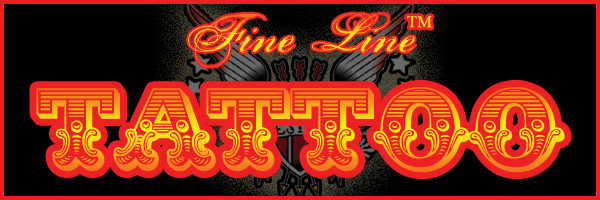




There has recently been considerable sensationalized derogatory press regarding oral piercings. Unfortunately many of the pertinent facts are not being reported. A well-informed and discerning consumer is subject to far fewer dangers. When performed by a skilled and experienced professional using appropriate sterile, disposable instruments the risks are minimal and the procedure is instantaneous and essentially painless. Proper placement and the correct style and size of inert jewelry are absolutely critical.
Also vital is the cooperation of the piercee to care for the piercing adequately. Following the piercing the use of ice, rest, and elevation (just like with any wound) drastically diminishes the aftermath. An over-the-counter non-steroidal anti-inflammatory taken according to package instructions for the first few days can also help to keep swelling down. Most piercees report little or no bleeding and a minimum of swelling for a few days. Tongue and other oral piercings heal extremely quickly and uneventfully when all aspects are handled according to accepted practice.
Highly suggested for optimal safety is to replace the initial jewelry (which has some extra room to allow for the usual amount of initial swelling) with a snugger piece which fits closer to the body. There is then less chance of contacting the jewelry with the teeth and other oral structures. Also, balls made of acrylic can be worn inside the mouth to minimize risk of damage to the teeth. Further, a smaller ball can be worn on the underside of the tongue to reduce contact with the sublingual portion of the oral cavity. These and other precautions can be taken which bring risk of getting and wearing oral piercings to a negligible level.
Many of our colleagues have dedicated tremendous time and effort to become highly educated and skillful specialists. To disparage us and our field offhandedly without taking the details into consideration is not an accurate or helpful response. Particularly since many individuals still desire oral piercings, and intend to get them, it is far more constructive to provide accurate information and specific guidelines on what one should look for in a piercer. Please see our informational brochure Choosing a Piercer for details.
What is the POLICY ON PIERCING
MINORS?
Regardless of any local legislation being more lenient, the following is an
appropriate minimum standards policy on piercing minors:
For any piercing of a minor, a parent or legal guardian must be present to sign a consent form. Proof positive, state issued photo identification is required from the legal guardian, and a bona fide form of identification from the minor. In the event the parent has a different last name and/or address from the child, court documentation is needed to prove the relationship, i.e., divorce papers, or a remarriage certificate.
Under no circumstances is it acceptable or appropriate for a piercer to perform piercing on the nipples or genitals of an individual under 18 years of age.
What is
the APP POSITION ON Navel Piercings and Pregnancy?
Navel jewelry may be left in place; some women leave jewelry in during their
entire pregnancy and delivery. If, during your pregnancy the piercing becomes
uncomfortable, you can replace the jewelry with Tygon or PTFE, which are inert
plastics (something like thick fishing line). These will bend and flex with
your changing body, be more comfortable, and are safe to wear. Once your pregnancy
is over, you can return to the jewelry.
Even long after the piercing is totally healed, it may or may not stay open without something in place. This varies from person to person. Wearing an inert plastic in the piercing will insure that it can be maintained.
In the event you elect to remove the jewelry entirely there is a chance it could be reinserted using an insertion taper even if the old jewelry won't go back in readily. If it cannot be reinserted it is quite likely that it can be repierced.
As a side note, some women who lack sufficient tissue quantity or pliability for navel piercing prior to pregnancy are often well suited afterwards.
There is no special care that is required during pregnancy for healed piercings.
What is the APP POSITION ON Breast
Feeding and Pregnancy?
In our collective, massive experience, we have no awareness of even a single
case of a woman who wished to breast feed and could not as a result of having
had a nipple piercing. The milk ducts are a multiplicity of little pore-like
ducts. Therefore, the likelihood of closing them all off from a piercing of
usual size is virtually nil.
Most women do remove their jewelry for breast feeding and we believe this to be appropriate. As a result, some milk may come from the site of the piercing during nursing, which is not harmful nor problematic. Some will use an insertion taper (a tool designed for this purpose) to facilitate reinsertion or to check regularly and make certain the holes are open.
There is no special care that is required during pregnancy for healed piercings.
What is
the APP POSITION ON Body Art During Pregnancy?
It is advisable to refrain from undergoing any and all body art procedures during
a pregnancy, even just an ear lobe stretch. It is best to let your body focus
on the important, complex and demanding task that it is handling already. Further,
we suggest that a longer period be observed prior to nipple piercing. It is
advisable and prudent to wait three months following the cessation of breast
milk production before piercing of the nipples.
What is
the APP POSITION ON Body Piercing During Nursing?
With the exception of a 3-month post-partum delay we do not find it contraindicated
to receive piercings (with the obvious exception of the nipples) during nursing.
The body is not under the same type of demands as during pregnancy.
Further, we suggest that a longer period be observed prior to nipple piercing. It is advisable and prudent to wait three months following the cessation of breast milk production before piercing of the nipples.
What is
the APP POSITION ON APP Position on Stud Guns?
It is the official position of the Association of Professional Piercers that
only sterile disposable equipment is suitable for safe body piercing.
The lack of ability to sterilize the ear piercing guns is one of the issues of concern about such equipment. Blood can aerosolize (become airborne in essentially microscopic particles) and contaminate the gun. If any part of the stud touches any part of the contaminated gun, there is the possibility of transmitting a disease-causing micro organism. The Hepatitis virus can live for extended periods on inanimate surfaces, therefore transmission of such disease through this type of equipment is possible.
Further, most of the ear studs are quite dull, even if slightly pointy. The piercings are accomplished using a considerable amount of force. This is more like a crush injury than a piercing, and feels like one as well. The use of a sharper, sterile object makes for a much safer, gentler, more comfortable piercing.
Other aspects of concern include the fact that the studs are too short for some earlobes, which can result in complications. The jewelry can get completely embedded in ear lobes, even when pierced according to usual practice with a gun. Also, the piercings are difficult to clean thoroughly if too close fitting. The studs do not allow for much room even on slim lobes. Air and blood circulation are limited which can delay or complicate healing. Swelling and/or scar tissue formation can result. Also, the butterfly backing of ear studs have a configuration that can easily trap bacteria adding to the potential risk of infection.
Another problem is that the guns are very easy to misuse. Some who operate them ÒprofessionallyÓ have little or no training. Further, many people do not stop at piercing only the lobes, and pierce eyebrows, tongues, nostrils, navels and other body parts with the ear stud guns. Such usage is warned against by most manufacturers, but that does not prevent frequent abuse of the ear piercing gun equipment. This is absolutely inappropriate and very dangerous!
Proper use of sterile, disposable equipment and sterile jewelry in a hygienic environment is the best way to prevent disease transmission during a piercing procedure.
What is
the APP POSITION ON Piercing Kits?
As an association of dedicated, educated, highly experienced piercing professionals
we are adamant that piercing kits for sale to the general public represent a
serious potential health hazard. Much piercer education and training is necessary
in order to perform a safe, sterile, accurate piercing. Simply providing such
tools to an inexperienced consumer is a dangerous act of negligence.
The use of these piercing kits by untrained consumers results in significantly greater potential for the transmission of bloodborne pathogens and diseases than do piercings performed by skilled professionals.
An area of particular concern is that of underage individuals performing body piercings on themselves and their friends using readily available piercing kits sold through mail order, on the Internet, or by calling a toll free telephone number. Young people are particularly at risk because, without parental consent, minors are denied professional piercing services in virtually all states where legislation has passed. However, they can still obtain the kits and get pierced without their parents' consent or knowledge. Should an infection or other complication occur, no responsible adult will be on hand to oversee the situation or provide access to appropriate medical care.
Also of great concern is the possibly deadly potential for the contaminated needle to be reused on multiple people. Further, there are dangers of accidental needle sticks to others, since limited or no instructions are included for appropriate disposal of the used needle.
Through legislation, many states allow body piercing that is performed only by a trained, licensed professional in an environment that provides hospital sterilization and submits itself to health department inspections. Most states (43) currently have legislation regarding personal criteria for the piercer, requirements for the piercing establishment, and highly specific laws necessitating parental consent for the piercing of minors. The laws and guidelines, along with the efforts of the professional body piercing community provide those interested in receiving a body piercing with a safe, clean environment to do so, and with a piercing technician who has appropriate training and sufficient experience to be hygienic and proficient.
The nature of the piercing kits do not allow for any of these safety measures to take place. The kits can be purchased by anyone, which is the most relevant aspect of the eminent danger of piercing kits. Piercing kits are not purchased by licensed, experienced professional piercers, who already have access to such items and equipment through legitimate industry sources. Instead, they are purchased by those who either do not have access to an experienced piercer, or who do not have sufficient understanding of the issue to appreciate that sterility, skill and education are an integral part of the piercing procedure.
As professional piercers we want to keep the art of body piercing safe for all who give and receive piercings. We take our field seriously and understand that the risks can be substantially minimized with proper training, equipment, and sterilization. Over-the-counter piercing kits undermine all the work we and our legislators have done to protect the public health while allowing our art form to flourish.